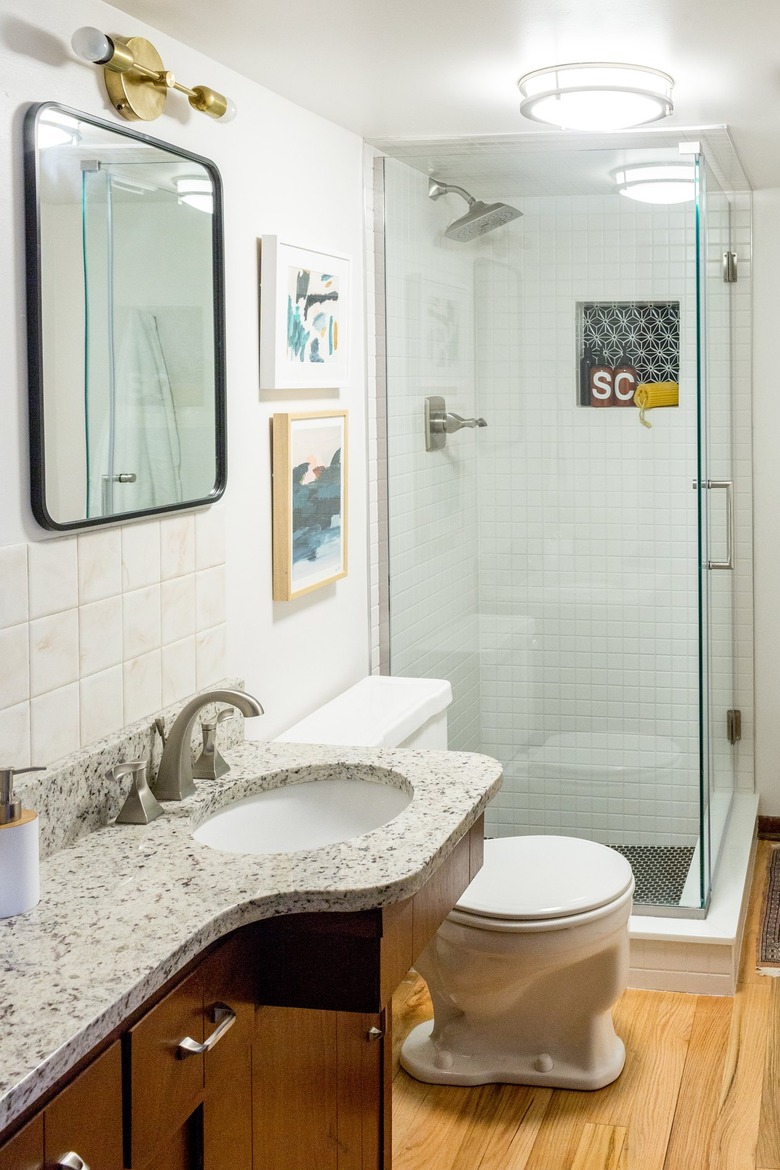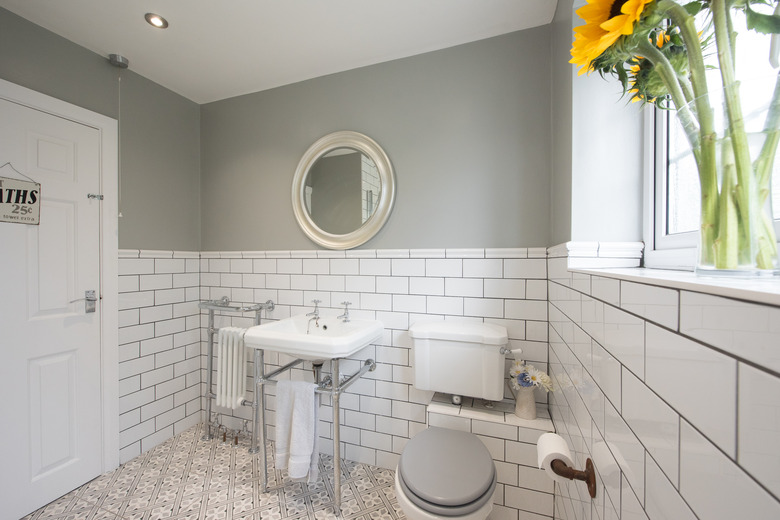How To Fix A Running Or Leaking Toilet
You don't want to hire a plumber for a simple DIY problem, and a leaking toilet, more often than not, fits that description. In most cases, you can rectify the situation by reaching into the toilet tank and making a few adjustments, and only rarely do you need to do something more drastic, like tighten toilet tank bolts or pull the toilet. Even if you feel squeamish around toilets, few toilet repair tasks (short of removing the toilet) are even remotely revolting.
Toilets, like automobiles, come in various models, but they all work in basically the same way to perform a common function. They all have a fill valve to fill a tank with water, and they have a flush valve that releases water into the bowl when you activate it by pulling a handle or pushing a button. These two mechanisms, which are far from the business end of the toilet, are responsible for most leaking toilet symptoms.
Intermittent Fill Valve Operation, or Ghost Flushing
Intermittent Fill Valve Operation, or Ghost Flushing
If your toilet fill valve wakes you up in the middle of the night by suddenly turning on, you've got a case of what Crawford Mechanical Services calls ghost flushing. That's a favorite term in the plumber lexicon because it's so common.
The problem is that the flapper, which is part of the flush valve, isn't making a reliable seal, and that's usually because the flapper is worn out and needs to be replaced. If your toilet has a canister instead of a flapper, the seal on the bottom is worn. An easy way to test for a leaky flapper or canister seal is to put food coloring in the tank, wait for several hours without flushing the toilet and see if the water in the bowl turns the same color.
Replacing the flapper or canister seal is easy to do. To replace a flapper, you simply unhook it from the chain, pull or slide it off the overflow tube and install an identical one or a universal flapper, which fits most toilets. To replace a canister seal, remove the canister, pull the rubber gasket off the bottom and install a new one. In the rare instance that doesn't stop the leak, you'll probably have to replace the entire flush valve, which involves removing the tank from the toilet bowl.
Toilet Runs All the Time
Toilet Runs All the Time
When the fill valve doesn't turn off at all, you have a running toilet. In most cases, the fill valve will be partially closed, so the water isn't flowing at full force, but it could still be wasting several gallons of water per hour, so it needs to be fixed as soon as possible.
The flapper or canister seal may be the culprit, and it may need to be replaced, but the problem could be even simpler. The chain holding the flapper or canister to the flush handle could be too short, and that prevents the flapper or canister from seating on the flush valve and making a watertight seal. If that's the case, all you have to do to fix your leaking toilet is lengthen the chain by a few notches.
Another possible cause is a fill valve that is stuck or malfunctions so that it fails to turn off the water. A fill valve float (the part that rises with the tank water and ultimately shuts off the fill valve) can get stuck on the valve shaft, and sometimes, the valve simply stops working. In either case, a quick replacement of the entire fill valve is an easy fix.
The Toilet Tank Overfills
The Toilet Tank Overfills
The fill valve can also cause a running toilet because when it isn't adjusted properly, the tank overfills, and excess water spills into the overflow tube. It's easy to see this happening. If you have an old ballcock-style fill valve, unscrew the ball to lengthen the armature or bend the armature to make the ball sit deeper in the tank. To adjust a Fluidmaster cup-style fill valve, lengthen the rod connecting the float to the valve by unhooking it or unscrewing the nut on top with a screwdriver.
Fill valves often have an adjustment screw on the top of the valve body, and you can increase the valve sensitivity and make the valve shut off sooner by turning this screw clockwise with a screwdriver. Sometimes, though, the valve is just worn out and needs to be replaced. Fortunately, that's a DIY job that involves eight easy steps, according to Sansone, and replacement valves are inexpensive.
A Leaking Toilet Tank
A Leaking Toilet Tank
A leaking toilet can drip water onto the floor underneath the tank, and when this happens, it's usually because the toilet tank bolts are loose or the seals around them are failing. First, try tightening the bolts with a screwdriver, and if that doesn't stop the leak, empty the tank, remove each bolt and replace the rubber gasket around the head. You can reuse the bolts, but it's probably a good idea to replace them as well.
If the tank still leaks, look for signs of a hairline crack, and if you find any, replace the tank or the entire toilet. If you don't see any evidence of a crack, the next thing to do is remove the tank from the bowl and replace the rubber gasket between them, called the spud washer.
Water Around the Toilet Base
Water Around the Toilet Base
If you see water on the floor around the bottom of the toilet, that means the wax ring is leaking, and while there may be several reasons for this, the remedy is always to remove the toilet. If you're squeamish, this is the toilet repair you want to avoid because things will get yucky, although not in the way you expect. Scraping off old wax isn't necessarily unsanitary, although you definitely want to wear gloves while doing it because it's a messy job.
There's a good reason to call a plumber if things get to this point, even if you aren't squeamish. The wax ring may be leaking because the bottom of the toilet is too far from the toilet flange, which is the fitting that holds the toilet to the floor. That's easy to fix, but it's also possible that the flange is corroded and needs to be repaired or replaced. This is often a job for someone with the right tools and know-how, especially, as Plumber Magazine points out, if the flange is cast iron.


